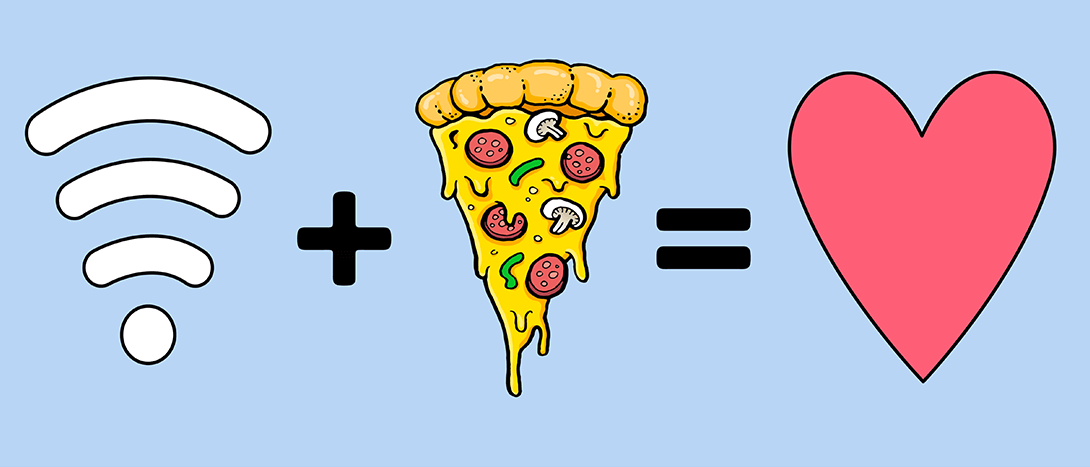How Jeff Bezos’ 2 Pizza Rule Affects Productivity In Today’s Industry

Introduction
Jeff Bezos, the founder of Amazon, is known for his innovative management techniques and principles. One of the most discussed and celebrated of these is the "2 Pizza Rule." This simple yet effective rule states that no team should be larger than what two pizzas can feed. In essence, it emphasizes the importance of small, manageable teams to enhance productivity and foster innovation. This blog delves into the implications of the 2 Pizza Rule on productivity in today's industry, exploring its benefits, challenges, and real-world applications.
Understanding the 2 Pizza Rule
Origins and Concept
The 2 Pizza Rule emerged from Bezos’ experiences in managing growing teams at Amazon. He observed that as teams grew larger, communication became more complex, decision-making slowed down, and accountability diluted. By limiting team size to a number that can be comfortably fed by two pizzas, typically around 6-10 people, Bezos aimed to maintain agility, improve communication, and enhance overall productivity.
Core Principles
1. Small Team Size: Small teams are more agile and can make decisions faster. Each member’s contribution is more visible, fostering a sense of accountability.
2. Enhanced Communication: With fewer members, communication channels are less convoluted, reducing the risk of miscommunication and ensuring that everyone is on the same page.
3. Increased Accountability: Smaller teams mean each member has a significant role, increasing their responsibility and ownership over the team's success or failure.
4. Innovation and Creativity: Small, diverse teams are more likely to generate innovative ideas as they can brainstorm and pivot quickly without the bureaucratic hurdles that larger teams face.
The Impact of the 2 Pizza Rule on Productivity
Improved Efficiency
- Faster Decision-Making: Smaller teams can make decisions more swiftly due to fewer layers of hierarchy and bureaucracy. This leads to quicker implementation of ideas and solutions.
- Streamlined Communication: With fewer people, meetings are more productive, and the flow of information is more direct and clear, reducing misunderstandings and delays.
Enhanced Collaboration
- Stronger Team Dynamics: Team members in smaller groups tend to develop stronger working relationships, leading to better collaboration and teamwork.
- Focused Goals: Smaller teams can stay more focused on their objectives without getting sidetracked by unrelated tasks or tasks that often arise in larger groups.
Greater Innovation
- Agile Problem-Solving: Small teams are more flexible and can adapt quickly to new challenges and changes in the market, fostering a culture of continuous improvement and innovation.
- Diverse Perspectives: Smaller teams often bring together individuals with varied skill sets and backgrounds, leading to more creative and innovative solutions.
Case Studies: The 2 Pizza Rule in Action
Amazon
At Amazon, the 2 Pizza Rule has been instrumental in driving innovation and maintaining the company's competitive edge. Small teams are responsible for specific projects or product lines, allowing them to experiment and iterate rapidly. This approach has led to the development of groundbreaking products and services, such as Amazon Web Services (AWS) and Amazon Prime.
Other Industry Examples
- Google: Google also embraces the concept of small, autonomous teams. The company’s famous “20% time” policy, which allows employees to spend 20% of their time on projects of their choosing, is often implemented within small teams, leading to innovations like Gmail and Google News.
- Spotify: Spotify uses "squads," small, cross-functional teams that work on specific aspects of the platform. Each squad operates like a mini-startup, fostering innovation and rapid development.
Challenges and Limitations
Scalability
- Resource Allocation: Ensuring that small teams have the necessary resources can be challenging, especially in large organizations with complex hierarchies.
- Coordination: As the number of small teams increases, coordinating efforts and ensuring alignment with overall company goals can become difficult.
Maintaining Cohesion
- Consistency: Ensuring consistency in processes and quality across multiple small teams can be challenging.
- Cultural Integration: Maintaining a cohesive company culture while encouraging autonomy within small teams requires a delicate balance.
Strategies for Implementing the 2 Pizza Rule
Defining Team Objectives
- Clear Goals: Set clear, measurable objectives for each team to ensure alignment with overall company goals.
- Regular Check-ins: Implement regular check-ins and reviews to monitor progress and provide support where needed.
Empowering Teams
- Autonomy: Give teams the autonomy to make decisions and take ownership of their projects.
- Support: Provide the necessary resources and support to help teams succeed, including access to tools, training, and mentorship.
Encouraging Communication
- Open Channels: Foster open communication channels within and between teams to ensure the free flow of information and ideas.
- Collaboration Tools: Utilize collaboration tools to facilitate communication and coordination, especially in remote or distributed teams.
Measuring the Success of the 2 Pizza Rule
Key Performance Indicators (KPIs)
- Productivity Metrics: Track metrics such as project completion times, output quality, and innovation rates to assess the impact of small teams on productivity.
- Employee Satisfaction: Monitor employee satisfaction and engagement levels to ensure that the small team structure is fostering a positive work environment.
Continuous Improvement
- Feedback Loops: Implement feedback loops to gather input from team members and continuously improve the small team approach.
- Adaptability: Be willing to adapt and refine the implementation of the 2 Pizza Rule based on feedback and changing business needs.
Conclusion
Jeff Bezos’ 2 Pizza Rule offers a compelling framework for enhancing productivity in today's fast-paced and innovation-driven industry. By promoting small, agile teams, businesses can improve communication, increase accountability, and foster a culture of innovation. While there are challenges to implementing this approach, with the right strategies and continuous improvement, the benefits can far outweigh the drawbacks. As industries continue to evolve, the principles behind the 2 Pizza Rule will remain relevant, providing valuable insights for businesses striving to stay competitive and innovative.